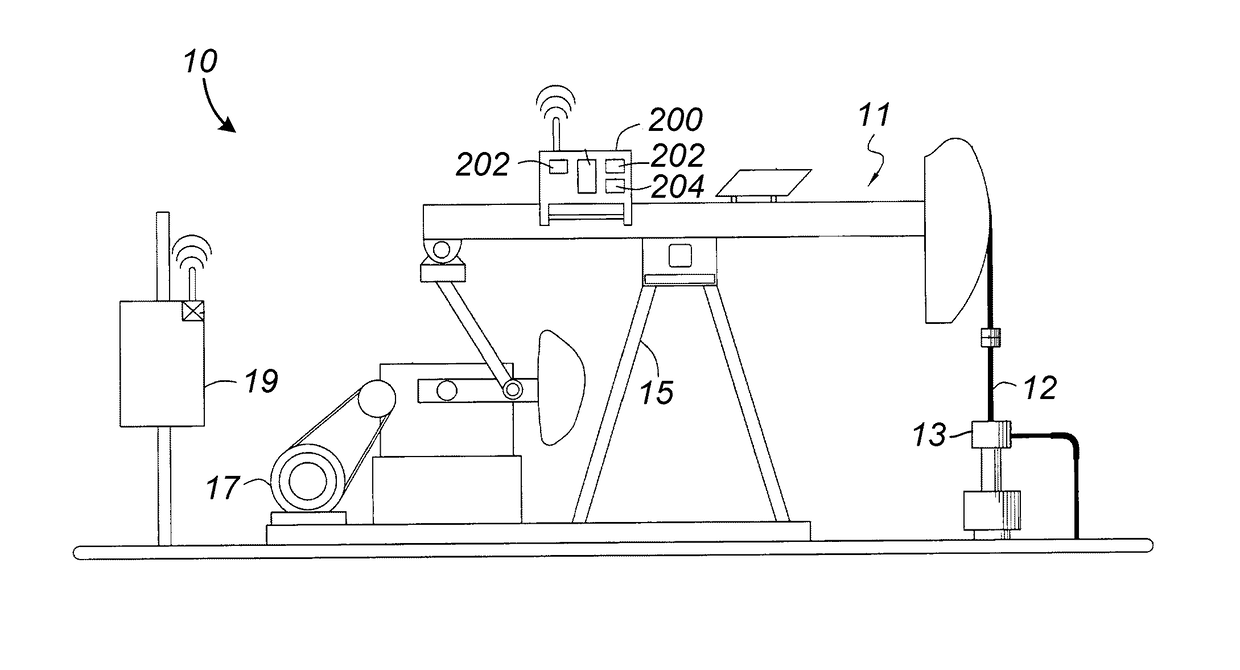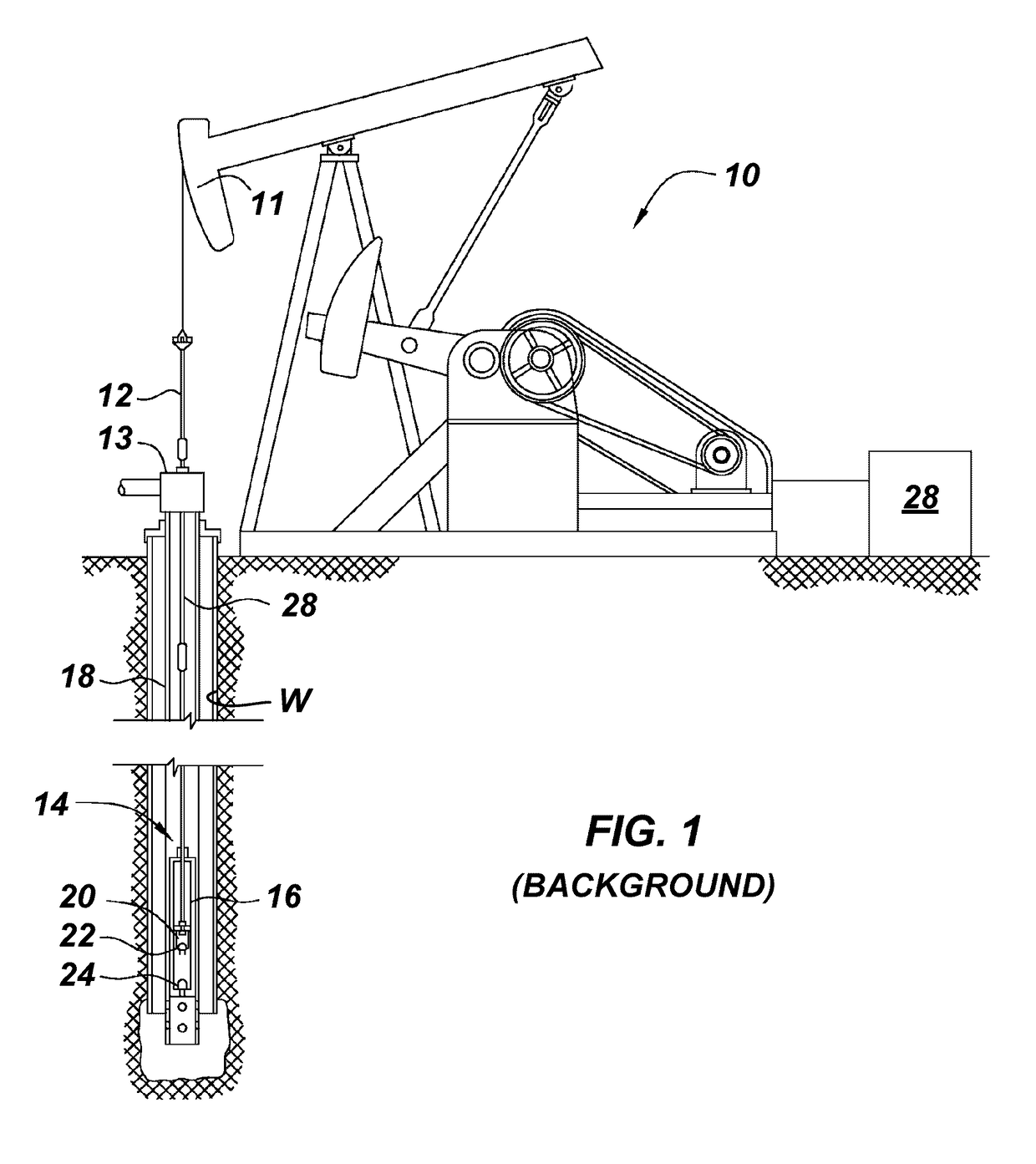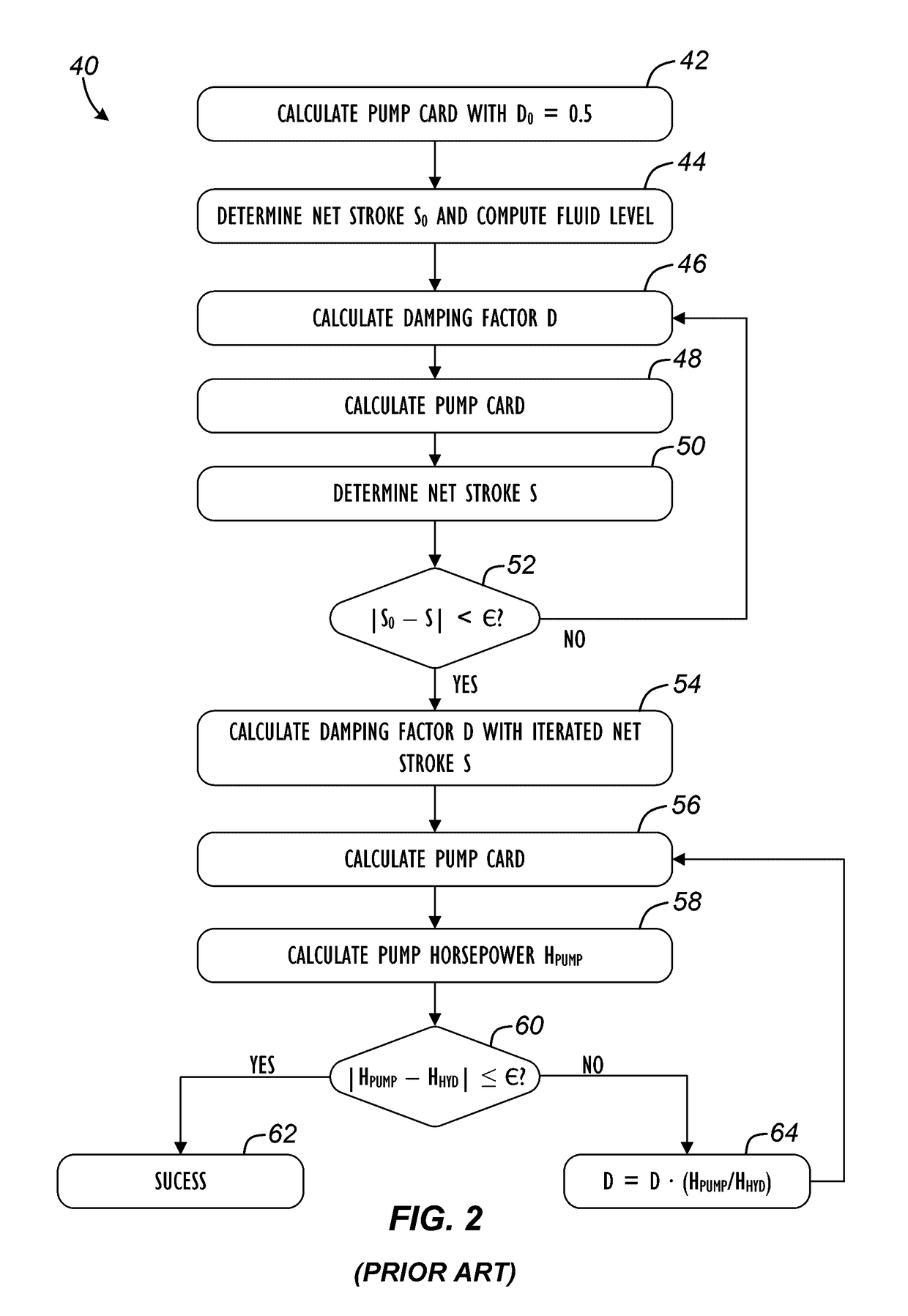Calculating Downhole Card in Deviated Wellbore Using Parameterized Segment Calculations
a technology of segment calculations and downhole cards, which is applied in the direction of borehole/well accessories, instruments, surveys, etc., can solve the problems of destroying various components of the pump system, inefficient, and inability to accurately represent the properties observed downhole at the pump
- Summary
- Abstract
- Description
- Claims
- Application Information
AI Technical Summary
Benefits of technology
Problems solved by technology
Method used
Image
Examples
Embodiment Construction
[0066]According to the present disclosure, a pump system and process computes downhole data from surface data by solving a wave equation, such as the wave equation of the modified Everitt-Jennings algorithm. The wave equation takes both viscous damping and Coulomb friction into consideration. If the well is substantially vertical, the mechanical friction from the Coulomb friction coefficient is negligible, and the obtained downhole data may be relatively accurate. However, in a deviated or horizontal wellbore, the mechanical friction between the rods, couplings, and tubing needs to be considered carefully. According to the present disclosure, the process refines the mechanical friction factors in the calculation of downhole data in deviated or horizontal wellbores.
[0067]To do this, the teachings of the present disclosure model the wellbore's trajectory, parameterizes the various deviated segments (build-ups, slants, drop-offs, etc.) in the modeled trajectory, maps the rod string to ...
PUM
 Login to View More
Login to View More Abstract
Description
Claims
Application Information
 Login to View More
Login to View More - R&D
- Intellectual Property
- Life Sciences
- Materials
- Tech Scout
- Unparalleled Data Quality
- Higher Quality Content
- 60% Fewer Hallucinations
Browse by: Latest US Patents, China's latest patents, Technical Efficacy Thesaurus, Application Domain, Technology Topic, Popular Technical Reports.
© 2025 PatSnap. All rights reserved.Legal|Privacy policy|Modern Slavery Act Transparency Statement|Sitemap|About US| Contact US: help@patsnap.com



